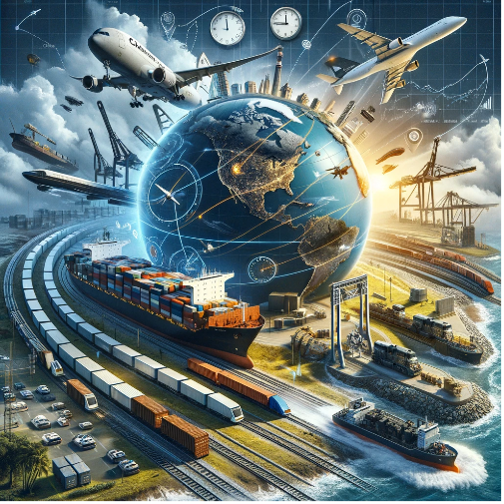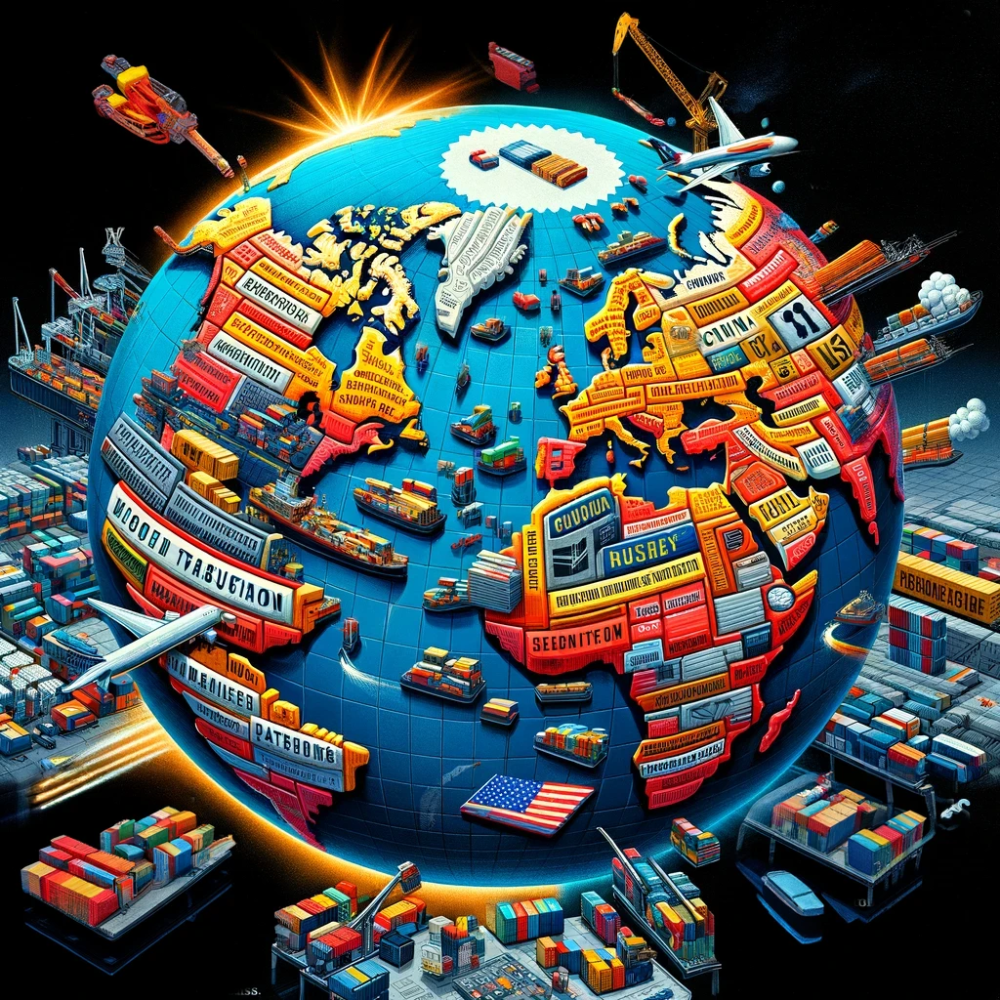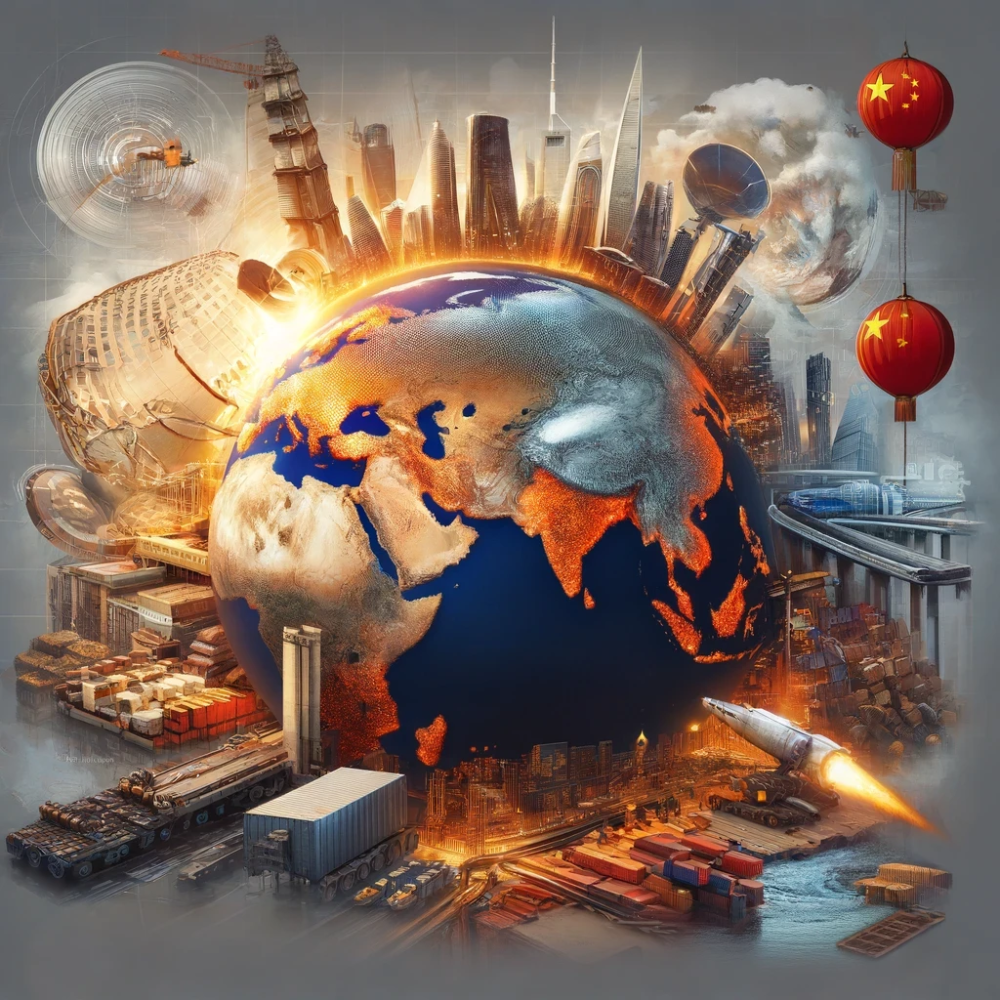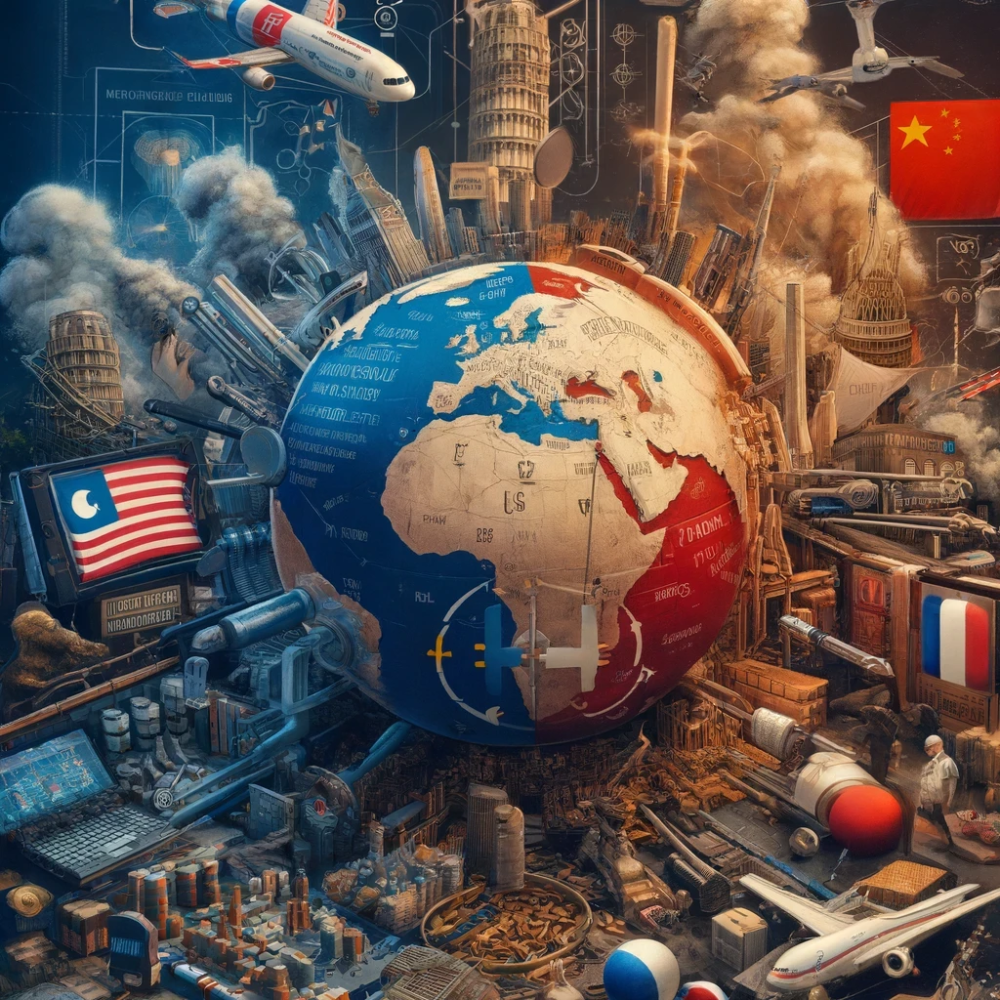Can we make our supply chains more resilient at a reasonable cost?
Our supply chains have already undergone major changes in recent years and further stochastic changes are to be expected.
It is therefore not surprising that increasing the resilience of supply chains is a key topic in companies and in consulting projects.
Our supply chains have already undergone major changes in recent years and further stochastic changes are to be expected.
It is therefore not surprising that increasing the resilience of supply chains is a key topic in companies and in consulting projects.
In principle, a company can react to slow, continuous changes, but the effort required may be too great.
It is even more difficult to be prepared for stochastic changes in the supply chains.
In the following, I will use my experience and observations from supply chain management consulting and numerous conversations with managers from manufacturing and retail companies to try to assess how much scope we have to increase the resilience of our supply chains.
I will focus on the following five areas of action that are frequently discussed when it comes to improving the resilience of the supply chain:
- Safeguarding fluctuating transport routes and delivery times
- Flexibilization of production processes
- Better risk management
- Shifting procurement markets and supply relationships away from China to avoid political uncertainties
- Shifts in sales markets to avoid economic and political uncertainties in China
- Decoupling from the global economy
Safeguarding fluctuating transport routes and delivery times

The focus is on making transport routes and delivery times more flexible, especially when the required goods are transported by sea.
Disruptions on the sea routes have now become the rule rather than the exception.
Alternative routes, such as the use of rail transport instead of ocean-going vessels or the combination of ship and air transport, may represent a cost and time compromise compared to air transport, but due to their lower capacity compared to pure sea transport, they offer little relief overall.
For sea transportation, the only option is to choose alternative routes, such as Cape Horn instead of the Panama Canal or the Cape of Good Hope instead of the Suez Canal.
This leads to a considerable lengthening of the supply chains.
Maersk speaks of a delay of five to six days for the approximately 3,000 nautical miles around Africa, while the Kiel Institute for the World Economy estimates a delay of ten days based on empirical data.
Nevertheless, there is probably no other option but to take these longer delivery times into account in future material planning.
Opportunities to improve resilience: high
Costs of improving resilience: medium to high
Flexibilization of delivery processes
During the coronavirus crisis, some companies have already practiced changing designs and production processes in order to react flexibly to shortages of materials and components.
Nobody likes to do this.
It is risky in terms of product quality and often hardly possible due to legal regulations or required customer approval processes.
Nevertheless, it is important to examine the extent to which products can be designed more flexibly and more technical flexibility can be ensured in the manufacturing processes in order to maintain delivery capability in critical situations.
New demands are being placed on product development, procurement and production.
However, it will be difficult to make changes due to the fact that personnel resources are stretched to capacity.
Chances of improving resilience: low
Costs of improving resilience: very high
Better risk management

Improved risk management that recognizes procurement and transport risks at an early stage is considered essential today.
The further development of data analytics plays a key role here, as it enables companies to identify risks more precisely and act proactively accordingly.
Almost all companies are working on their risk management.
Today, there are much better ways of identifying risks than 10 years ago, due to the wide range of data and information sources available.
However, recognized risk also requires a response.
Whatever this reaction looks like, be it higher inventories, other transportation routes, other suppliers, procurement or sales regions, it will usually cost more money.
These investments in reduced risk must pay off for a company in the “foreseeable” future.
And therein lies the problem.
It is not “foreseeable” when a risk will occur, otherwise it would not be a risk but an event.
Risk management therefore raises risk awareness, but does not necessarily lead to sufficient risk provisioning.
From a strategic perspective, does it make sense to finance high excess stocks for months (or years) in order to be one of the few suppliers still able to serve its customers in the event of a supply crisis?
From a business point of view, this only makes sense if the additional income from the monopoly position in the supply crisis exceeds the additional costs incurred over a long period of time.
Considering that for most companies the annual warehousing costs amount to between 19% and 30% of the inventory value and that important liquidity is tied up in cash inventories in the long term, it may make more sense not to cushion the risk, to forego the excess profits in a supply crisis and, if necessary, to invoke force majeure.
Chances of improving resilience: low
Costs of improving resilience: very high
Shifting procurement markets and supply relationships away from China in order to avoid political uncertainties.

In addition to broadening the supplier base in general, the diversification of procurement markets, away from the previous heavy dependence on China and towards alternative markets in South East Asia and India, is a gradual but recognizable process for many companies.
Whether it will gain momentum depends not only on the will of Western companies to become less dependent on the politically sensitive Chinese procurement market, but also on the will of Chinese entrepreneurs to achieve the same and therefore relocate production away from China.
The speed of relocation will also depend on how quickly the necessary technological expertise can be built up in South East Asia and how the economic situation in China develops.
If the Chinese economy does not recover in the long term, this is likely to put pressure on factor costs and make the Chinese market a little cheaper again.
As a result, the competitive position of the other Southeast Asian countries would become weaker in comparison to China.
In any case, such a relocation process will take time, entail process and quality risks and will only be possible for some of the required goods.
Opportunities to improve resilience: low to medium
Costs of improving resilience: medium to high
.
Shifts in production and warehouse stocks

In the coming years, there is likely to be a significant shift in production and warehouse locations for a variety of reasons.
We are currently experiencing a significant shift on the entire global market as a result of the sanctions imposed by the West on Russia.
The deindustrialization in Germany, triggered by energy costs and accelerated by erratic policies, is leading to the relocation of German production capacities abroad.
If production is already being relocated, then it is not being moved a few hundred kilometers further within Europe, but rather regionalized directly and production is being moved to the major target markets, in many cases China and the USA.
Becoming less dependent on the Chinese procurement market does not necessarily mean saying goodbye to China’s sales market.
As long as the Chinese revenues are not needed to cross-subsidize the costs of the entire group and production in China is not for the European market, the risk is probably manageable, as the Chinese business can be spun off if necessary.
Production will take place elsewhere – with greater political risk – and deliveries will then be made to Europe, with the discussed risks in the supply chain.
This is unlikely to improve the resilience of the entire supply chain.
Opportunities to improve resilience: low
Costs of improving resilience: high
Shifts in sales markets to avoid economic and political uncertainties in China.

Every trend has an end and, as we all know, no tree grows to the sky.
This basic law presumably also applies to the Chinese economy.
There are increasing signs that the economic crisis in China is becoming more entrenched and that the era of rapid growth is over.
As a result, demand for consumer and capital goods will also decline.
This will at least potentially lead to a shift in sales markets towards the USA and the EU.
Many German companies are already feeling the effects of the economic slowdown in China and an astonishing amount of business has been diverted from German and European companies to the US market in a surprisingly short space of time.
New sales markets in Africa and South America are likely to develop rather slowly and, from a global perspective, will not gain any significant importance in the next 10 years.
For some sectors, there is a good chance of reducing uncertainties by decoupling from the Chinese sales market, while other sectors are too dependent on the Chinese drip to get away from it alive.
Opportunities to improve resilience: zero to medium, depending on the industry
Costs to improve resilience: infinite to medium
Decoupling the global economy

No one I have spoken to in recent months in industry and trade can imagine a real decoupling of the global economy.
This idea comes more from France.
French industry, especially the luxury goods industry, which is so important for France, has also benefited from globalization in recent years.
Nevertheless, France seems to be thinking more in terms of decoupling and trade barriers, both politically and economically.
However, you can also be caught out by a decoupling of the global economy without actively pursuing it.
There are two lurking dangers of massive disruption.
The first danger is that the USA will present Europe with the alternative of “together in NATO and against China” or “alone in NATO and alone with China”.
No matter what Europe decides, it would face massive economic problems.
The second danger would be an attack by China on Taiwan, the consequences of which would be incalculable for all sides.
Chances of improving resilience: zero
Costs of improving resilience: very high to infinite
We don't have much room for maneuver.
Our task is to make our supply chains both more resilient and more effective.
However, with the six areas of action and vulnerability discussed above, I believe that our ability to increase the resilience of our supply chains at an acceptable cost is rather limited given the current situation and the foreseeable and feared global developments.
There are many other approaches to making supply chains more resilient.
Which of these are you tackling and how do you rate your chances there?
What will the Supply Chain Act achieve apart from reliably increasing bureaucracy?
No improvement in working conditions, but change in supplier and cost structures.
First of all, you might think, the Supply Chain Act will affect the distant suppliers who do not work according to ethical standards and will be forced to improve working conditions.
However, I think it is very likely that the labor situation will not improve much.
Instead, there will be a segmentation of suppliers into larger suppliers that still deliver to Europe and other, larger and smaller suppliers that sell their products in other parts of the world.
It would also be naïve to expect that only large companies in Europe will be affected by the requirements; smaller companies will also be affected.
As suppliers to larger companies, smaller companies will inevitably also be subject to the constraints of the Supply Chain Act.
This should tend to lead to larger companies also being preferred as suppliers in the European part of the supply chain, as it is easier for them to provide the necessary evidence and they can more easily bear the necessary costs.
It will probably be easier to tell in two to three years’ time how strong these effects will be than it is today.
If the effect works, it is likely to tighten the procurement markets for European suppliers, thereby reducing supplier competition, increasing procurement prices and making efforts to broaden the supplier base more difficult.
Chances of improving resilience: low


